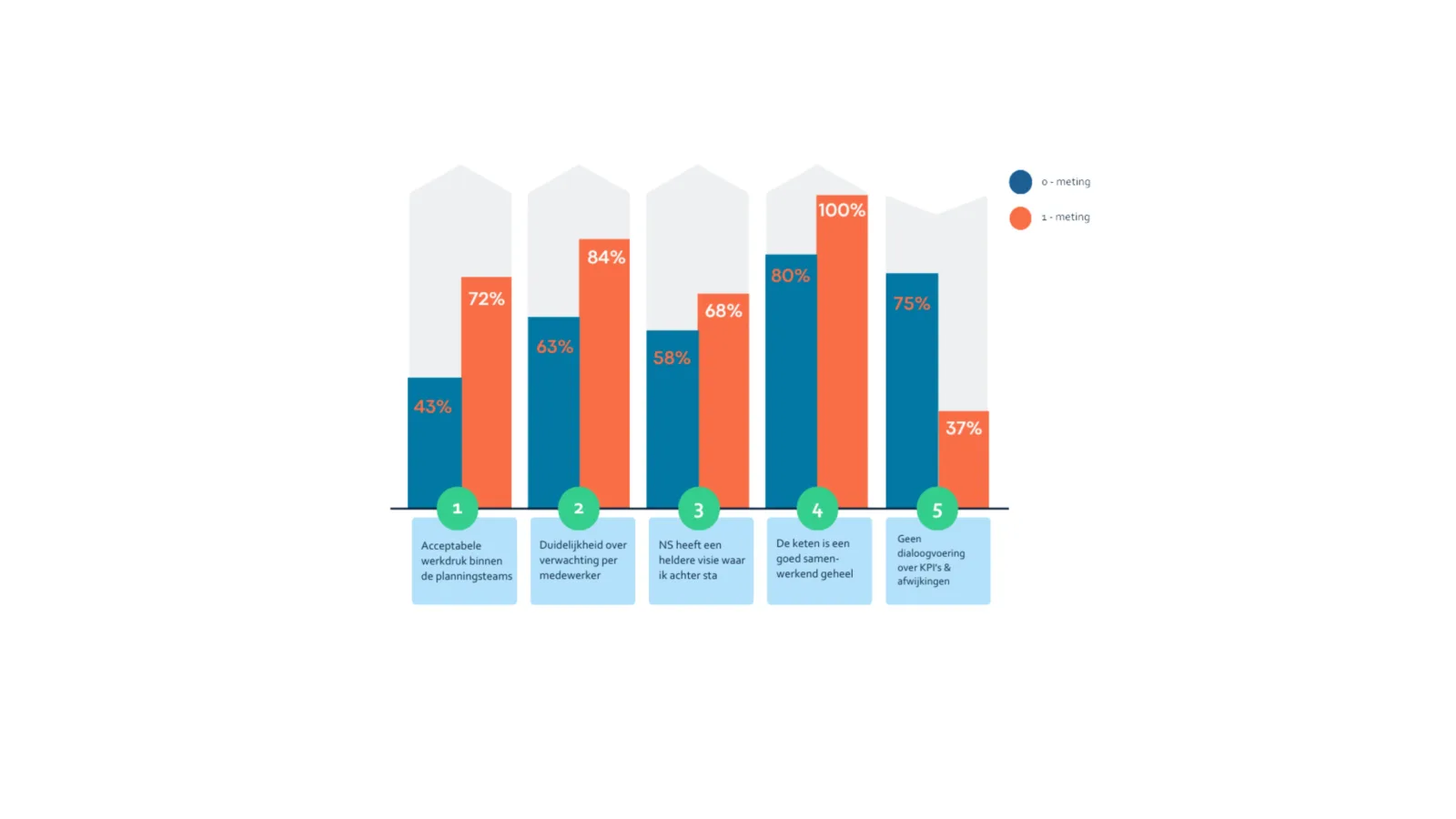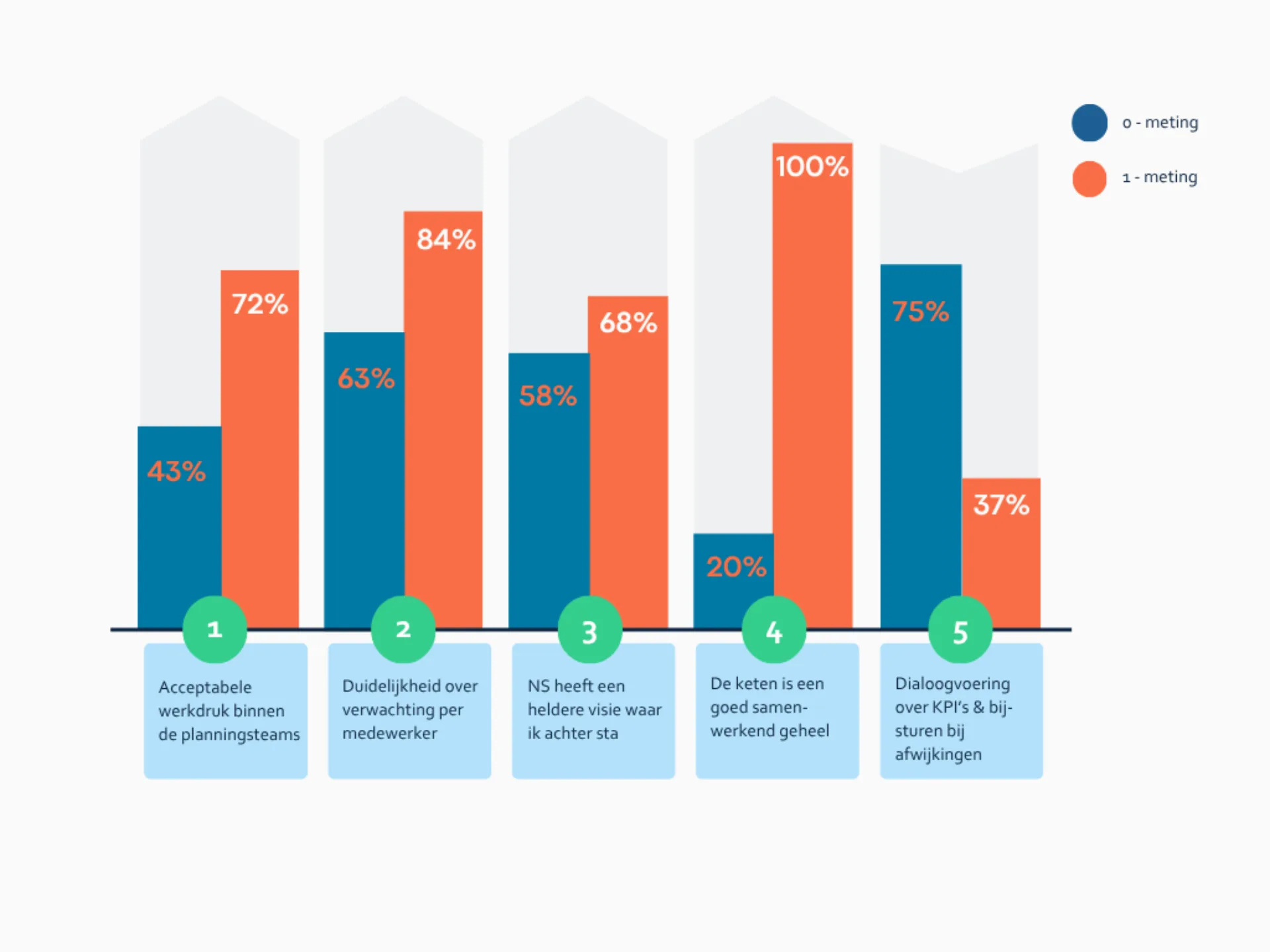Highberg supports NS in executing their strategy to improve timetables
The NS chain “Specific Days” was facing a decline in timetable quality combined with increased workload for its employees. This was primarily caused by shifts in passenger behavior following the COVID-19 pandemic, staff shortages, and a growing number of last-minute changes in rail maintenance. Due to these developments—alongside high work pressure and the ad hoc nature of the chain—NS struggled to internally shape and sustainably implement the necessary changes.
As a result, Highberg was brought in to analyze bottlenecks within the chain, design a future vision, and implement it iteratively. This led to annual savings of €300,000, measurable cultural shifts, and improved employee satisfaction.
The project lasted ten months and consisted of analysis, design, and implementation phases, all carried out using an agile approach.

The customer request
The "Specific Days" chain creates customized timetables for events, holidays, and service disruptions. The context has changed significantly due to altered passenger patterns after the COVID pandemic, staff shortages, and more last-minute service disruptions from ProRail. Despite multiple attempts, no sustainable solutions had been found for the following three objectives:
- Workload: streamlined processes without rework
- Quality: higher seat availability and passenger punctuality
- Future-proofing: a self-learning capability within the chain
Emile Drost, Head of Planning & Client
I am very satisfied with the steps taken. It turns out that small improvements together lead to a big result.
Assignment for Highberg
- Conduct a chain-wide analysis to identify the bottlenecks related to workload, quality, and future-proofing
- Design the desired future state by resolving the issues identified in the analysis
- Test the ideal situation in practice, improve it, and design new solutions where needed
- Implement the components that prove effective and continue iterating until the desired level is achieved
Tijmen Voet, Head of Network Development & Design
Despite the increased complexity, we never go out of control anymore.
Our approach
Analysis phase: including interviews, shadowing days, observations, data analyses, surveys, and interpretation sessions with the internal improvement team.
Design phase: design of the future vision across workstreams (strategy, quality, collaboration, culture, integration) with a multidisciplinary team.
Implementation phase: testing the future vision per workstream using an agile approach and iterations, supported by workstream leads and MT sponsors.
Stakeholder, Governance & Operations
At BO (the recipient of the SD), we noticed that you were struggling with this. We now see real improvement on your side and are benefiting from it, so on behalf of myself and my BO colleagues—thank you!
Results
The first step was to create a shared understanding within the chain regarding the required cultural transformation. The key elements of this transformation included a focus on decisiveness, fostering constructive dialogue, evaluating collaboration, and connecting areas of expertise.
The main activities carried out to achieve this — and which are still actively continued beyond our involvement — include: Developing a clear strategy and translating it into team-level KPIs, continuously improving processes, which has already resulted in annual savings of €300,000, defining clear roles and discussing mutual expectations, introducing meeting coaching, peer review sessions, and feedback training.
Highlights from the employee survey within the SD:
-
Acceptable workload within planning teams: from 43% to 72%
-
Clarity on expectations per employee: from 63% to 84%
-
NS has a clear vision that I support: from 58% to 68%
-
The chain is a well-functioning collaborative unit: from 20% disagree to 100% agree
-
Dialogue on KPIs & adjustments in case of deviations: from 75% to 37% disagree

Related Insights
